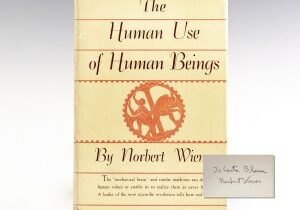This week we are celebrating the life and work of American journalist and author Thomas Kennedy Wolfe Jr. who recently passed away on May 14th, 2018 at the age of 88. Tom Wolfe was widely associated with the intensely immersive New Journalism style of news writing that emerged in mid 1960s America; he coined the term ‘New Journalism’ with the publication of his 1973 collection of articles of the same name which included his own work in addition to works by his contemporaries Truman Capote, Hunter S. Thompson, Norman Mailer, and Joan Didion. Articles in the New Journalism style were typically published in magazines as opposed to newspapers as the subjective style was deemed unconventional and challenged journalistic conventions of the time.
Wolfe began his career as a reporter for the Springfield Union in Springfield, Massachusetts in 1956 while finishing his thesis at Yale University. He went on to work at The Washington Post and New York Herald Tribune and published his first collected book of essays, The Kandy-Kolored Tangerine-Flake Streamline Baby in 1965.

First Edition of The Kandy-Kolored Tangerine-Flake Streamline Baby; Signed by Tom Wolfe, Phil Spector and Junior Johnson
The book that launched New Journalism in America, Wolfe began the now famous “Kandy” memorandum as a titular essay for Esquire. Barely making his deadline, Wolfe submitted his unpolished notes to editor Byron Dobell who published it immediately, enabling Wolfe to see the depth feature journalism could achieve with the fusing of fiction and reporting. The article was published as a book along with 22 other essays in 1965, each of the works unified by Wolfe’s experimental techniques and interest in status and culture.

First Edition of The Electric Kool-Aid Acid Test; Signed and Inscribed by Tom Wolfe, Ken Kesey, Larry McMurtry, Ken Babbs, Ralph Metzner, Ed McClanahan, Angela Davis and Leonard Cohen
Published three years later by Farrar Straus Giroux in 1968, Wolfe’s The Electric Kool-Aid Acid Test offered an extraordinary insight into the 1960’s hippie movement with a vivid account of the exploits of Ken Kesey and the Merry Pranksters on a bus tour across America and arguably became the most popular example of New Journalism. Throughout the work, Wolfe painted Kesey as a Christ-like figure instigating the dawn of a new religion; the hero of a growing counterculture tripping on acid and growing in popularity.
In 1972, Wolfe was assigned by Jann Wenner, editor of Rolling Stone Magazine, to a story covering the launch of NASA’s Apollo 17 moon mission. Wolfe became engrossed in the subject and conducted extensive research, interviewing test pilots, astronauts and their wives. The article evolved into his 1979 work The Right Stuff, documenting the stories of the first Project Mercury astronauts and American pilots engaged in postwar research with experimental high-speed aircraft. Written at a time when it was unfashionable to contemplate American heroism, the book was heralded by the Boston Globe as “one of the most romantic and thrilling books ever written about men who put themselves in peril.” In his foreword, Wolfe noted that as late as 1970, almost one in four career Navy pilots died in accidents. “The Right Stuff,” he explained, “became a story of why men were willing–willing?–delighted!–to take on such odds in this, an era literary people had long since characterized as the age of the anti-hero.”

First Edition of The Bonfire of the Vanities; Inscribed by Tom Wolfe to his editor Davis Kent in the year of publication
In 1987, Wolfe published his first novel, The Bonfire of the Vanities. Based on the same sort of detailed on-scene reporting as his great nonfiction bestsellers, the book provided a sweeping panoramic story of 1980s New York City – the kind of fiction strangely absent from contemporary literature. The novel reinforced Wolfe’s reputation as the foremost chronicler of the way we live in America.
In addition to the books featured above, our collection also includes Wolfe’s Mauve Gloves & Madmen, Clutter & Vine And Other Stories, Sketches, and Essays and his recent novel Back to Blood.











